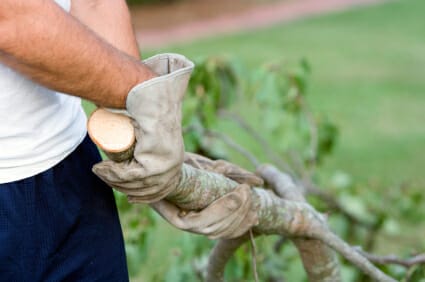 Pruning, when done correctly, should result in safe, healthy and beautiful trees. DIY tree pruning seems like a simple enough idea, however, there is more to it than simply dusting off your old garden tools and hatcheting away. A certified arborist is trained to understand when a tree needs to be pruned and why, but also skilled in proper pruning techniques.
Pruning, when done correctly, should result in safe, healthy and beautiful trees. DIY tree pruning seems like a simple enough idea, however, there is more to it than simply dusting off your old garden tools and hatcheting away. A certified arborist is trained to understand when a tree needs to be pruned and why, but also skilled in proper pruning techniques.
If you’re unsure what you are doing, it’s always best to avoid potential costly follies and contact us with any questions you may have.
For those who decide to prune without proper knowledge and preparation, here are some of the more common mistakes they make:
1. Using dull tools – Maybe you’ve never done much, if any, tree pruning before and the tools you have in your shed or garage have seen better days. Old overused tools may be dull, which makes the healing process longer since branches are not cleanly cut. Besides, it makes your job more physically challenging. Sharpen your tools or look into investing in new ones.
2. Not sanitizing tools – You wouldn’t want a doctor performing surgery with unsanitized surgical instruments, right? That analogy is not as crazy as you may think. After all, you are performing a kind of surgery on a living thing, and if you are doing it without cleaning your tools, you may transfer soil-borne diseases from the previous plants they were used on.
3. Topping or lopping – Thinking it’s okay to cut branches anywhere to achieve the desired effect – maybe they are encroaching on your home – is probably the most common misconception about caring for trees. Giving your tree a “crew cut” or “topping” is also referred to as “lopping.”
Simply put, lopping is the act of cutting a branch in spots other than a union or node. This creates a less attractive growth pattern, but more importantly, weakens the new branch structure. It can also make your tree more susceptible to fungal infections. You could be creating health issues for your tree, but also a hazard for you and your family.
4. Over lifting – Also called lion tailing, this is when a person removes all the lower branches of a tree, making it top heavy and more susceptible to branch failure.
5. Over pruning – Don’t get carried away when pruning a tree. You should never remove more than 25 percent of its leaf-bearing crown, even less when you are dealing with a mature tree. The surgery analogy applies here as well. Just as it takes an older person longer to heal from a surgical procedure, the same holds true for trees healing after pruning.
6. Flush cutting – This is when someone cuts a branch flush against the trunk or a main branch. It can cause a number of problems, including uneven bark and the potential for disease, fungus and pests.
While you may be well-intentioned, pruning your trees without fully understanding the proper means of doing so may not only compromise your tree’s health, but create future safety risks. Call us today and we’ll be happy to ensure you have a safe and healthy tree for many years to come.